
The traditional understanding of Vishnu’s ten Avataras, as outlined in Puranic texts like the Vishnu Purana and Bhagavata Purana, places them across vast cosmic cycles known as Yugas, spanning 4.32 million years.
This framework positions each Avatara as a distinct divine intervention to restore Dharma in different epochs.
A closer examination of Vedic texts, Puranic genealogies, and archaeological evidence suggests a more compressed timeline, where the Avataras appear in chronological pairs, often within centuries of each other, tied to specific historical and cultural contexts in ancient India.
This article proposes that the Avataras, rather than being separated by huge Yugas of millions of years, form thematic and chronological pairs, reflecting the socio-cultural and economic developments of the Vedic Harappan Period upto the post Harappan Sunga Period (~ 3200-149 BCE).
By aligning textual narratives with archaeological findings, we can reframe the Avatara tradition as a dynamic reflection of ancient India’s historical evolution.
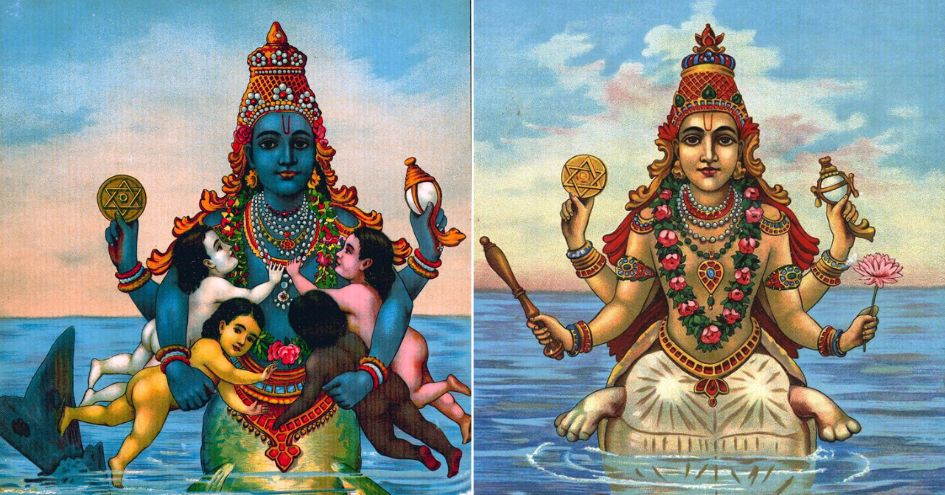
1. Matsya and Kurma: The Aquatic Pair (~3200-3000 BCE)
The first pairing is Matsya (the Fish) and Kurma (the Tortoise), both aquatic-themed Avataras, rooted in the Early Vedic period.
The Rigveda’s 7th Mandala, one of its oldest (circa 3200–3000 BCE), mentions the Matsya Janapada, a tribal settlement along the Yamuna River, east of the Vedic heartland, Vara Prithivya (modern Kurukshetra, that is, Northern Haryana). This region, central to the Harappan Civilization’s Sarasvati river system, was a hub of early urban settlements like Bhirrana and Kunal.
Matsya’s myth, saving Manu from a deluge reflects the flood-prone ecology of Sarasvati-Yamuna basin upto where Sarasvati joins the Sea, a recurring challenge for Harappan communities.
Similarly, Kurma’s role in supporting Mount Mandara during the Ksheera Sagara Manthana (churning of the ocean) symbolizes stability amidst dynamic maritime activities.
Archaeologically, sites like Bhirrana (~3500-2600 BCE) and Rakhigarhi confirm the Harappan civilization’s early urban phase, with riverine economies central to their prosperity.
The Matsya-Kurma pairing, both water-borne, allegorically represent the Vedic people’s adaptation to aquatic environments, from flood survival (Matsya) to resource exploitation (Kurma).
While the Rigveda lacks explicit references to Kurma, its later prominence in Puranic texts suggests an early mythic kernel, possibly inspired by Harappan iconography, such as seals depicting fish and turtles.
The thematic coherence of this aquatic pair, coupled with their alignment with the Early & Mature Harappan period.

2. Kurma and Mohini: Maritime Trade and Wealth (~2600–2200 BCE)
The second pairing links Kurma with Mohini, a feminine Avatara associated with the Ksheera Sagara Manthana. This narrative, detailed in the Mahabharata and Vishnu Purana, describes the Devas and Asuras churning the ocean to obtain amrita (nectar of immortality), with Kurma stabilizing the process and Mohini distributing the spoils.
While Mohini is not always counted among the ten Avataras, her role in this myth suggests a complementary function to Kurma, tied to the economic prosperity of the Harappan port city of Dholavira (Kushasthali-Dvaraka).
Dholavira, flourishing between 2600–1750 BCE, was a key maritime trade hub on the Arabian Sea, connected to inland Harappan cities via the Sarasvati river.
The Manthana can be interpreted as an allegory for marine trade, with Kurma symbolizing the stable infrastructure (ports, ships) and Mohini representing the equitable distribution of trade wealth.
The Sarasvati river linked prosperous urban centers like Bhirrana, Kunal, and Asandi to Dholavira, facilitating the exchange of goods like beads, metals, and textiles. This period marked the Harappan civilization’s peak, with evidence of long-distance trade with Mesopotamia and Central Asia.
The Kurma-Mohini pairing, though less conventional, reflects the economic and cultural dynamics of the mature Harappan phase.
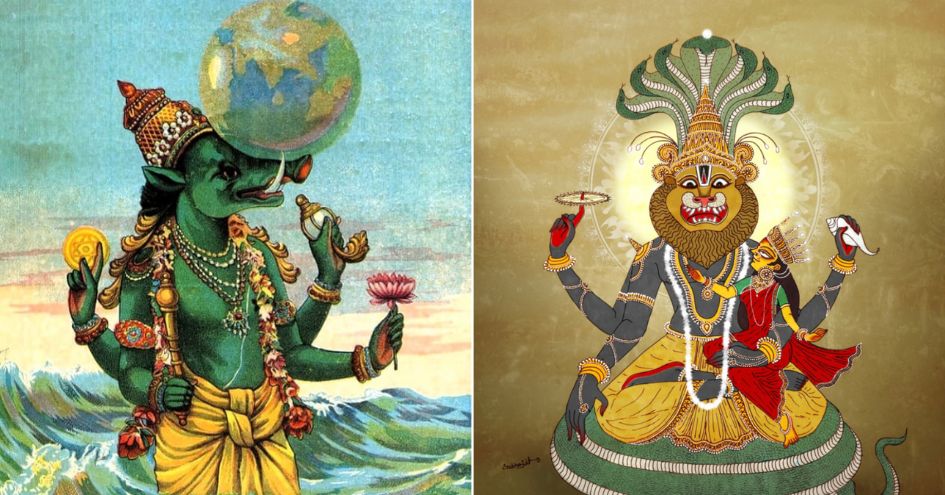
3. Varaha and Narasimha: Opposing the Asura Brothers (~2100 BCE)
The third pairing involves Varaha (the Boar) and Narasimha (the Man-Lion), who confront the brothers Hiranyaksha and Hiranyakashipu, respectively.
This pairing is narratively robust, as the Puranas explicitly link the brothers, suggesting their conflicts occurred in close temporal proximity.
The proposed date (~2100 BCE) places them in the late Rigvedic Period, coinciding with the Harappan civilization’s decline, marked by the Sarasvati river’s drying up.
Varaha’s myth — lifting the earth from cosmic waters — symbolizes the environmental recovery efforts during the Harappan decline, when shifting river systems disrupted agriculture with floods and drought.
Narasimha’s slaying of Hiranyakashipu, an Asura tyrant opposing Vedic rituals, reflects tensions between established Vedic communities and growing strength of the heterodox groups like the Rgvedic Anavas (Proto Iranians) opposed to the Puru Bharatas who worshipped Indra and Vishnu.
Hiranyakashipu considered himself to be a monotheist god. He banned the worship of any other god than himself. This is the oldest form of exclusive monotheism. The Narasimha narrative indicates the rejection of exclusive monotheism in our ancient land Bharata, as toxic to Sanatana Dharma.
The Puranic lineage tracing from Hiranyakashipu to Prahlada, Virochana, Mahabali, and eventually Vajravala (wife of Kumbhakarna, Ravana’s brother) connects Hiranyaksha and Hiranyakashipu to later Avatara narratives.
Archaeologically, the late Harappan phase (~2200–1900 BCE) saw urban abandonment and migration, potentially reflected in myths of territorial upheaval (Varaha) and cultural conflict (Narasimha).
They are mentioned in later Vedic texts like the Shatapatha Brahmana. The ~2100 BCE date aligns with this transitional period.

4. Vamana: The Standalone Avatara (~2000 BCE)
Unlike other Avataras, Vamana (the Dwarf) stands alone, without a clear paired counterpart. His interaction with Mahabali, Virochana’s son in the Hiranyakashipu lineage, places him in the late Harappan period (~2000 BCE).
Vamana’s interaction with Mahabali to reclaim the three worlds with three steps, symbolizes territorial or cultural reassertion, possibly reflecting Vedic communities’ efforts to consolidate influence amidst Harappan decline. It also indicates the continuing tensions between Devas and Asuras, which is a shadow of the tensions between the Rgvedic Puru-Bharatas and their Anava enemies.
Rgveda mentions Vishnu’s three strides. The Shatapatha Brahmana mentions Vamana. Both provide a Vedic anchor, earlier than Puranic elaborations. The ~2000 BCE date aligns with the post-Harappan transition, marked by the rise of Cemetery H and Ochre Coloured Pottery cultures, which indicate cultural shifts in northern India.
Vamana’s standalone status may reflect his unique role as a transitional figure, bridging earlier Harappan-inspired myths and later Vedic warrior narratives.
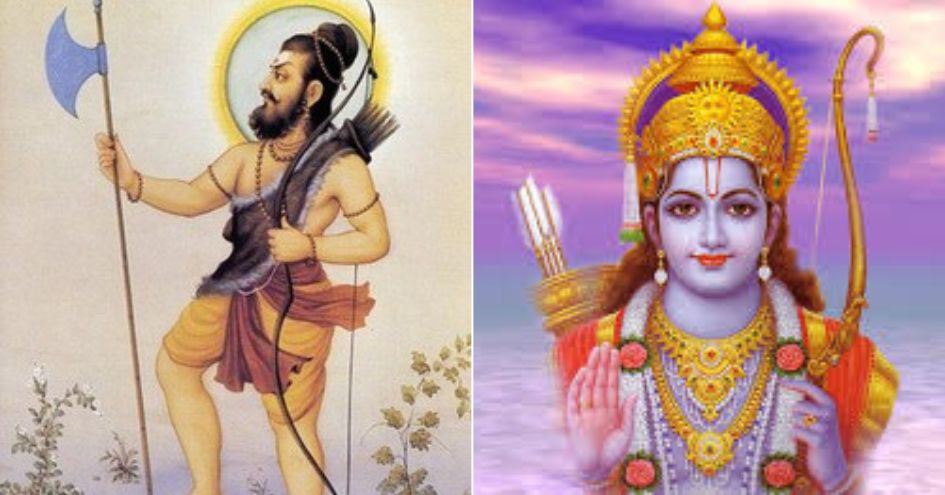
5. Parashurama and Rama: The Warrior Pair (~1950–1850 BCE)
The pairing of Parashurama (Rama Jamadagnya) and Rama (Dasharathi) is one of the strongest, supported by their narrative interaction in the Ramayana and mentions in the Rigveda’s 10th Mandala, (~2100-1900 BCE).
Parashurama, who slays the Kshatriya king Kartaviryarjuna (an ally-turned-enemy of Ravana), and Rama, who defeats Ravana, share a warrior ethos. Their brief conflict in the Ramayana underscores their contemporaneity, with Shantanu, a Bharata king mentioned in the 10th Mandala, as a historical anchor.
Archaeologically, the ~1950-1850 BCE period corresponds to the late Harappan/post-Harappan transition, with sites like Hastinapura emerging as cultural centers. The Ramayana’s setting, potentially linked to the Indo-Gangetic plain, reflects this period’s socio-political dynamics, with warrior-kings asserting dominance. The Rgveda’s mention of Jamadagni’s lineage (Parashurama’s father) and Shantanu strengthens the textual basis.
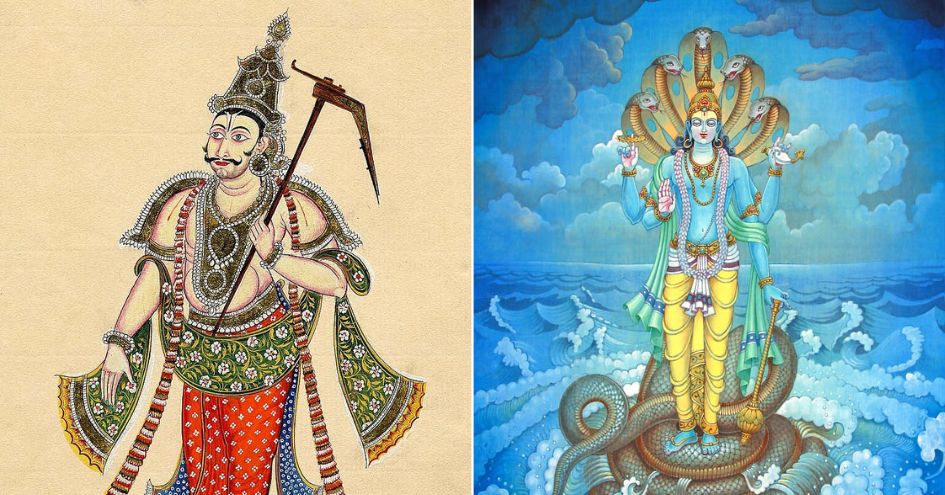
6. Balarama and Krishna: The Brother Pair (~1850–1750 BCE)
Balarama and Krishna, cousins and contemporaries of the Pandavas in the Mahabharata, form a clear chronological pair. Krishna, the central Avatara, and Balarama, included in some Avatara lists, are integral to the Kurukshetra war narrative. Shantanu’s descendants - Vichitravirya, Pandu, and the Pandavas provide a genealogical link, placing this pair in the post-Harappan period (~1850-1750 BCE).
Archaeological sites like Hastinapura and Mathura, associated with the Mahabharata, align with the Cemetery H and OCP cultures, suggesting a cultural continuity from the Harappan decline. Mahabharata’s internal consistency supports the pairing.
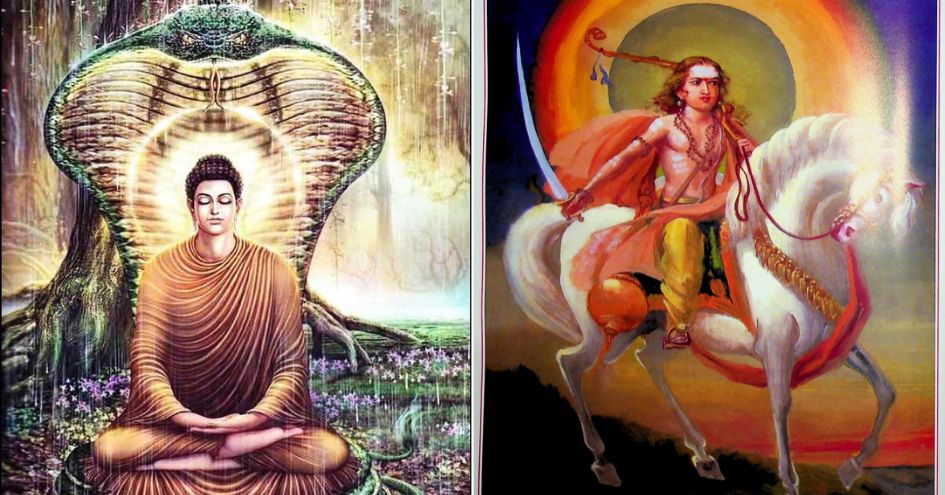
7. Buddha and Kalki: The Loose Pair (~563–149 BCE)
The final pairing of Buddha (563–483 BCE) and Kalki, tentatively linked to Pushyamitra Sunga (~185–149 BCE), is a loose pair.
Buddha’s inclusion as an Avatara in some Puranic lists reflects his historical impact, while Kalki, a future savior, is loosely associated with Pushyamitra, who restored Brahminical order by ending Shudra (Nanda/Maurya) and foreign (Yavana/Shaka) rule.
The temporal gap and Kalki’s futuristic role make this pairing mild, but Pushyamitra’s historical actions align with Kalki’s attributes, offering a creative interpretation.
Conclusion
The Avatara pairings reframes Vishnu’s incarnations as a reflection of ancient India’s historical, economic and cultural evolution, from the Harappan period (~3200–1900 BCE) to the post-Mauryan era (~149 BCE).
Matsya-Kurma, Varaha-Narasimha, Parashurama-Rama, and Balarama-Krishna are strongly supported by thematic, narrative, and partial textual/archaeological evidence. Kurma-Mohini and Buddha-Kalki, are intriguing.
By integrating Rigvedic, Puranic, and archaeological data, this framework challenges the 4.32 million year long Chatur Yuga-based timeline. But it offers a more historically grounded understanding of the Avatara tradition.
Future research could explore additional Vedic references or Harappan iconography to strengthen these connections, illuminating the interplay between myth and history in ancient India.
About the Author
 Jijith Nadumuri Ravi, former space scientist with ISRO, is the author of the book Rivers of Ṛgveda (January 2022), focusing on the geo-chronology of Ṛgveda, with an update on Out of India Theory. Jijith’s book on the Geography of Rāmāyaṇa is released on January 2023, and the third on Geography of Mahabharata on January 2024. At ISRO he contributed to the Chandrayan 1 GSO-LTO orbit design, and the GSLV launches D2, F01, and F02. He founded the website AncientVoice (ancientvoice.wikidot.com). It contains 25,376 pages on Mahābhārata, Rāmāyaṇa, Vedas and Purāṇas, and has Bhāratavarṣa maps, analysis articles, lineage charts, analysis of 16,000 plus nouns, data illustrations and paintings. Naalanda and Takshasila are the sister sites of AncientVoice, focusing on the Upaniṣads and Greek, Avestan and Tamil literature. Jijith was invited as speaker at international conferences and presented more than 8 research papers and worked as a mediator and analyst for the dating of the Kurukṣetra War. With expertise as an artist, he visualize events from Itihāsa-Purāṇas. Jijith founded the platform Dharma Digital (dharmadigital.in) with 100 plus self-made 3D digital talking holograms of Aithasic heeoes, to promote Dharma using technology of like Virtual Reality and Artificial Intelligence.
Jijith Nadumuri Ravi, former space scientist with ISRO, is the author of the book Rivers of Ṛgveda (January 2022), focusing on the geo-chronology of Ṛgveda, with an update on Out of India Theory. Jijith’s book on the Geography of Rāmāyaṇa is released on January 2023, and the third on Geography of Mahabharata on January 2024. At ISRO he contributed to the Chandrayan 1 GSO-LTO orbit design, and the GSLV launches D2, F01, and F02. He founded the website AncientVoice (ancientvoice.wikidot.com). It contains 25,376 pages on Mahābhārata, Rāmāyaṇa, Vedas and Purāṇas, and has Bhāratavarṣa maps, analysis articles, lineage charts, analysis of 16,000 plus nouns, data illustrations and paintings. Naalanda and Takshasila are the sister sites of AncientVoice, focusing on the Upaniṣads and Greek, Avestan and Tamil literature. Jijith was invited as speaker at international conferences and presented more than 8 research papers and worked as a mediator and analyst for the dating of the Kurukṣetra War. With expertise as an artist, he visualize events from Itihāsa-Purāṇas. Jijith founded the platform Dharma Digital (dharmadigital.in) with 100 plus self-made 3D digital talking holograms of Aithasic heeoes, to promote Dharma using technology of like Virtual Reality and Artificial Intelligence.
PREVIOUS ARTICLE
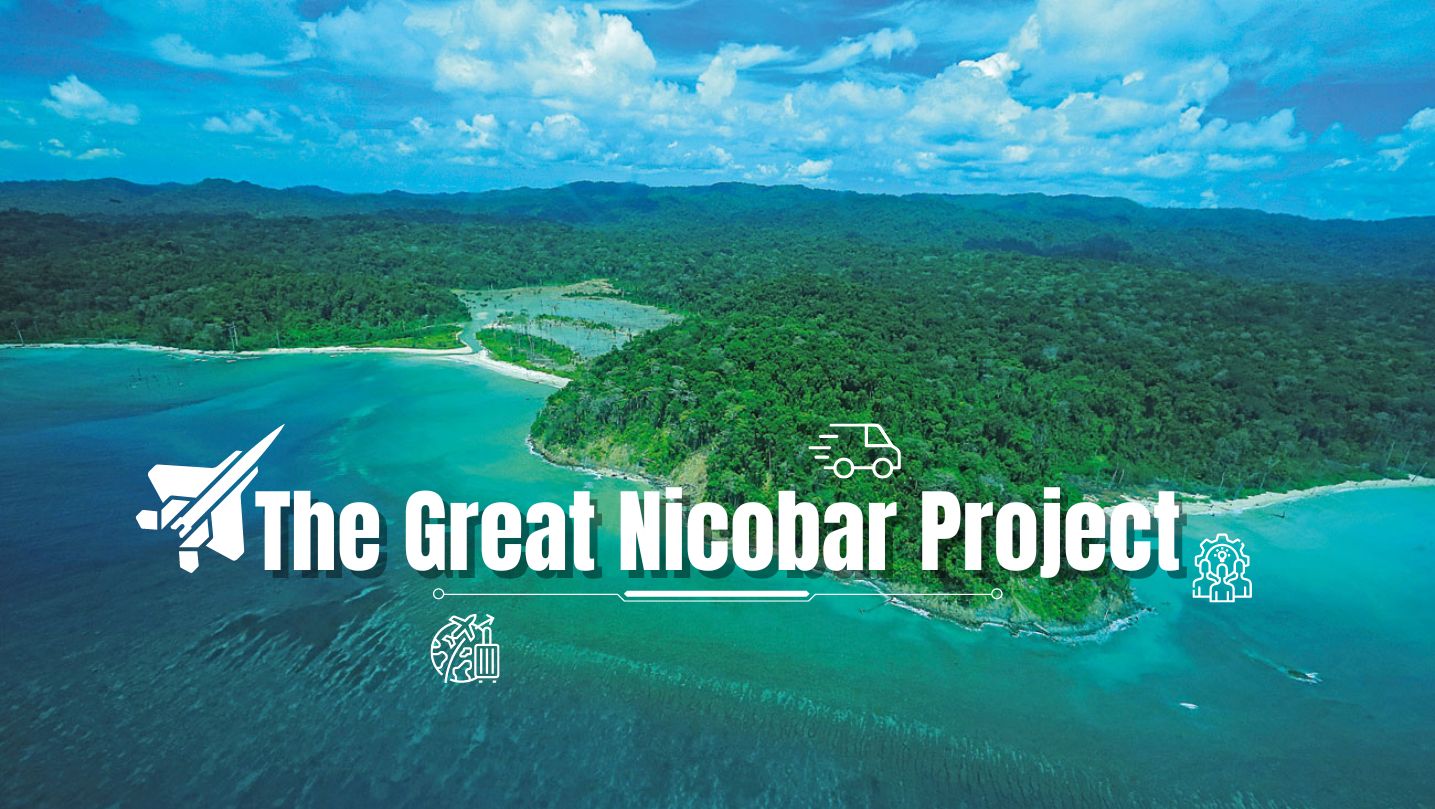
At the southernmost tip of this mesmerising ensemble lies the majestic Great Nicobar Island, boasting an impressive landmass of about 910 square kilom...
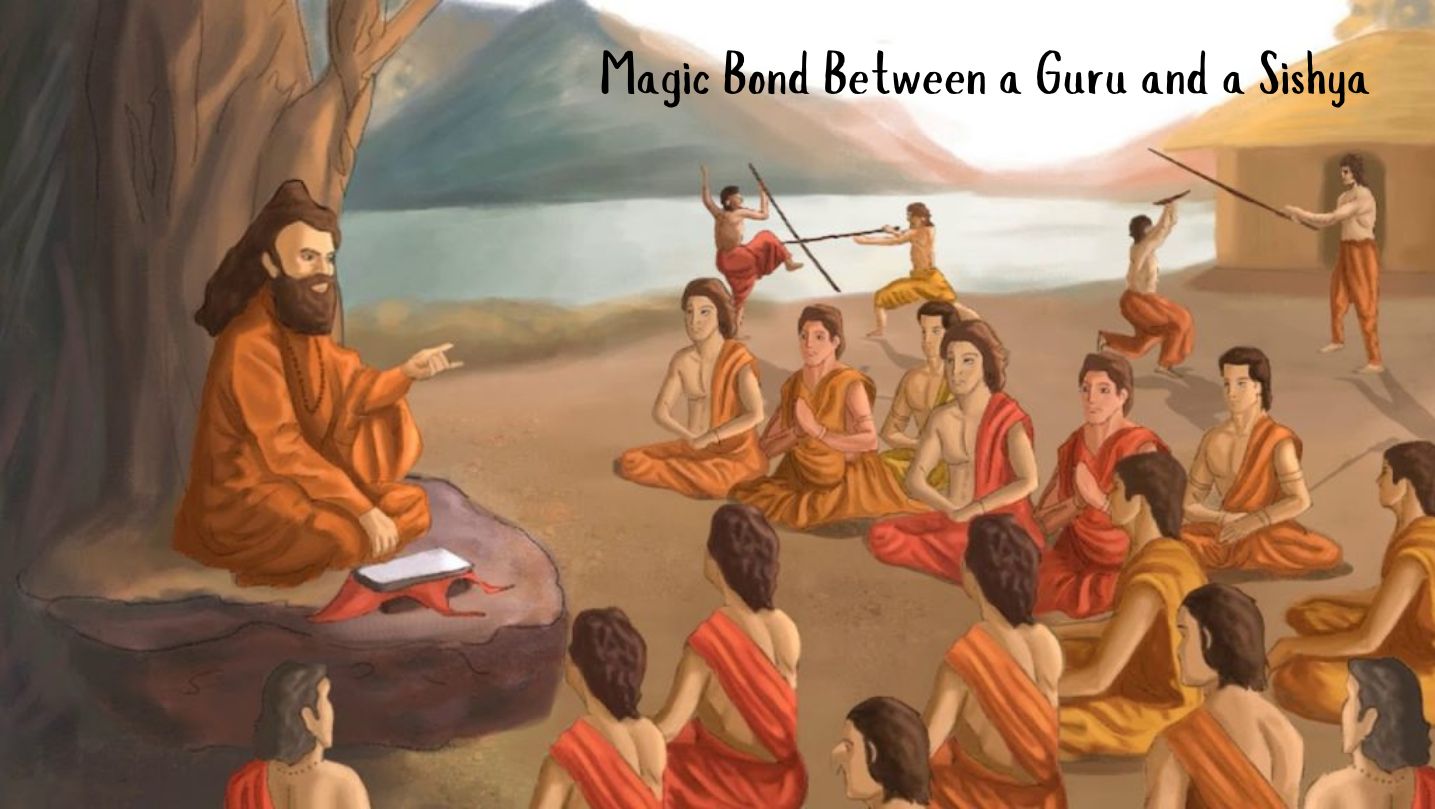
Bharath has always been a land traversed by spiritual masters/ Guru since time immemorial. These spiritual masters have always upheld the core princip...
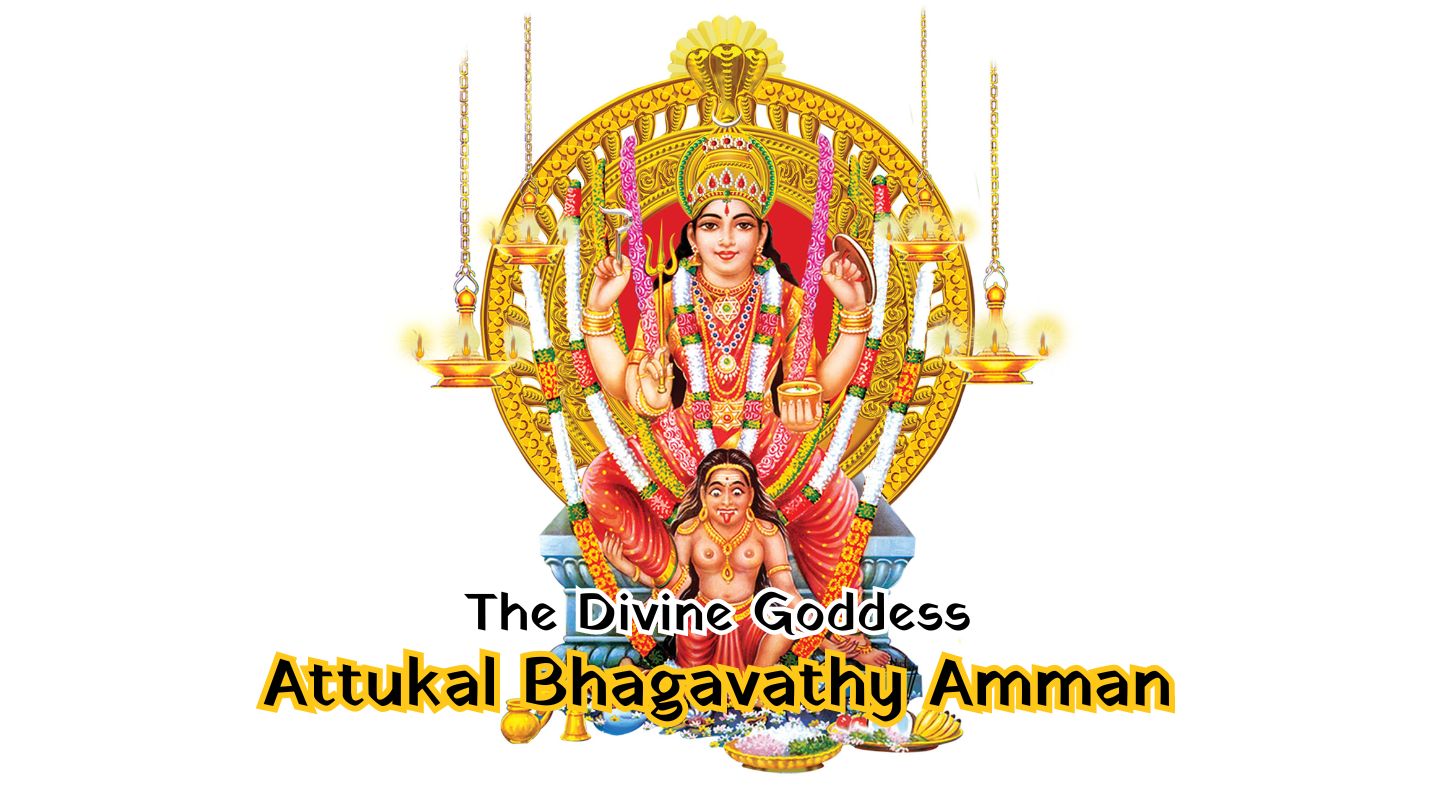
South India contains its fair share of unique pilgrimage centres. These divine places of worship have a prominent Sthala Purana, devoted followers, di...